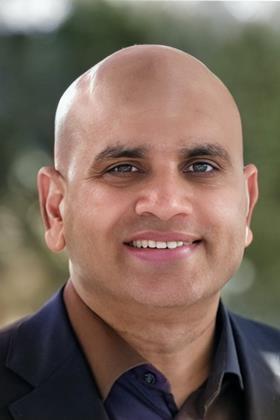In last month’s newsletter, Content Everywhere companies discussed which business models are providing the best return on investment for streaming providers. This has prompted a further discussion about how the customer experience can be transformed, particularly through the use of 5G, artificial intelligence (AI) and data analytics. As always, leading Content Everywhere companies have been keen to weigh in on the debate in this month’s issue.
Mala Ramakrishnan, chief operating officer at CuVo, kicks things off with the observation that media companies “wring their hands with despair” when trying to work out if they should invest in aggregating both SVOD and AVOD, integrate all applications into one combined platform, or add free ad-supported streaming TV channels.

“The answers lie in the data”, she says. “Qualitative data collected live in-app from viewers while they are engaging in an experience, correlated with quantitative data on performance” can help drive more informed decisions in areas such as customer experience, personalising content and advertising, and quality of service and experience.
As an example, she says over-the-top (OTT) platforms “can leverage big data to provide deep insights by analysing user behaviour and generative AI to deliver responsive, automated customer support. This can directly impact revenues by increasing retention”.
Vijay Sajja, founder and CEO of Evergent, agrees that effective personalisation “is driven by high-quality data”.
Today, he says, “media businesses need to deploy data-driven strategies to create tailored user experiences — helping maximise revenue generation and combating churn. AI-powered tools and predictive analysis can significantly reduce churn, enabling streaming providers to automatically combat potential service cancellations or payment failures with intelligent payment retry features, or a host of enticing and flexible retention incentives such as step-down payments or pause and resume offerings”.

Meanwhile, Bart Lozia, CEO of Better Software Group (BSG), argues that the media industry is “on the verge of a revolutionary shift”, driven by the combined power of 5G, AI, and big data analytics.
“Together, 5G, AI, and big data are not just changing the way we produce and consume media; they are successfully eliminating previous boundaries and fostering audience engagement. As these technologies continue to evolve, they open new creative possibilities in the media industry, making it an incredibly exciting time for creators, distributors, and consumers alike,” he says.

For example, Lozia sees AI as a “great contributor to the current transformation of content creation habits, changing the processes from linear to dynamic ones” while big data analytics “serves as the backbone of this transformation. The extent of data generated by viewer interactions is an endless source of insights, helping content creators and distributors to craft truly tailored experiences.”
AI takes hold
Much of the discussion has focused on AI and the role it is expected to play in improving customer experience with streaming services.
For example, Vinayak Shrivastav, CEO of Magnifi, notes that AI has significantly enhanced user engagement, personalised content recommendations, and streamlined content creation.

“Its transformative impact is reshaping the production, distribution, and consumption of media, particularly influencing sectors like broadcasting and streaming. Gartner’s projection suggests that by 2024, AI will generate a remarkable 75% of consumer-facing content, spanning articles, videos, and images,” Shrivastav says.
Beloslav Belchev, product manager at 3SS, comments that his company is currently evaluating AI “in order to understand the degree to which we might incorporate it into our business, and the role it might play in the solutions we deliver to our customers”.

“I believe there is huge potential to leverage AI to provide a far more personal, and overall, a better entertainment experience,” Belchev says. “Personalisation of advertising and content is something that’s been talked about for a long time. But the biggest difference AI can make is in terms of content creation, and what people need to pay for content, both of which have risen astronomically.”
Roland Sars, CEO of Media Distillery, adds that 2023 was “all about hype around OpenAI, with everybody and his dog showing demos based on large language models. In 2024, though, reality will begin to kick in”.

According to Sars, “we’re going to start seeing more real-world applications of AI. Now we know not everything that has AI is actually feasible in production, or scalable, or bring any real value to consumers. But soon, in our broadcasting space, tasks that are currently done editorially will start to benefit from AI assistance, subtitles for example, or image collection. And AI is actually beginning to help editors create content.”
Sporting chances
Sars notes that AI is “going to very much influence sports broadcasting”, with sports “one of the most important pillars for the pay-TV industry”.
“But this will happen in a way that improves the consumer experience. For example, new ways to engage with your favourite team, or athlete, will surface. Fanzones will become richer, and more personal, with more interviews, imagery and other content. People will get more of what they really want. This is good news for content owners: they will be able to provide better products to their customers, and they’ll get paid accordingly,” he says.
Evergent’s Sajja agrees that AI is “driving innovation for leagues, teams and federations that need to build closer connections to their fans through new direct-to-consumer streaming strategies”.
“By harnessing high-quality consumer data and AI-driven tools, sports organisations can reduce off-season churn and engage with fans all year round through flexible subscription options and membership-style models that provide value-added offerings such as discounts on events, merchandise, or in-stadium concessions,” he says. “Streaming providers that can gain critical behavioural insight into large sets of fans across different sports, demographics, and geographies are best placed to enable highly personalised user experiences — keeping subscribers engaged and unlocking new revenue streams.”
Continuing on the sporting theme, Tobias Froehlich, CPO and founder at TeraVolt, also says the landscape for sports content production and consumption has been transformed owing to AI-generated texts, conversational AI, generative AI, and other evolving forms.

“The sports video industry will be once again an early adopter. Camera operations, match directing will change, multiple mixed feeds produced by AI will originate from a single field of play. Analytical tools will deliver insights into the tactics, the performance and the mistakes much quicker and more accurate, helping both the fans to understand and the team managers to adjust,” he says.
Longer term, Froehlich adds, AI may “replay a match, after some (hobby-)coaches adjusted the tactical team setup, the choice of players, possibly with different results. Why should there be so much different outputs? Because the biggest trend of all and requirement for OTT is the hyper-personalisation. Viewers and subscribers want to have their individual choice. And AI will deliver exactly this.”

Yang Cai, CEO of VisualOn, also says that enhancing the consumer experience in media becomes particularly pronounced during large live streaming events, where network capacity faces significant challenges.
“The emphasis is on delivering an unparalleled Quality of Experience (QoE) to ensure a seamless and captivating viewer interaction. This naturally leads to the exploration of AI applications in this context,” Cai says.
The personal touch
Meanwhile, Marc Baillavoine, chief technology officer at Synamedia Video Network, notes that AI is helping to drive the ‘per user’ customisation that is enabled by streaming.

“For example, in TV advertising, with AI-based dynamic digital ad insertion we’re now able to drop personalised ads directly into programming. And given AI’s ability to crunch an almost infinite amount of data in infinitesimal amounts of time, reaching the next level of personalisation – the hyper-customisation of ads – is literally just around the corner,” he says.
Baillavoine adds: “I predict for the next Rugby World Cup that the logos we will see on team players’ shirts will be tailored to each viewer’s tastes and preferences.”
Gatis Gailis, CEO of Veset, also points out that AI and 5G have had a dramatic impact on content creation in the past decade.

“In the world of playout, these new players are set to make some pretty dramatic changes in the coming years. The opportunities available to media service providers with AI involved are near limitless, and I have no doubt that playout will be greatly affected by the implementation of AI-fuelled services,” he says.
Tom Dvorak, co-founder and CCO at XroadMedia, notes that personalisation “is made even more accurate with the use of AI, as it gives a deeper understanding of users and the content that it’s recommending. AI helps create effortless watching experiences, reducing the friction of searching for series and films, viewers can easily discover the best suited content for them without wasting lots of time searching”.

And Oliver Lietz, CEO of Nanocosmos, says his company has seen a “steep increase in AI-related inquiries coming from many companies worldwide and different industries. Adding AI-based speech tech to real-time streaming is an important feature for streaming as it is an opportunity to increase accessibility and outreach for multi-language audiences.”

Daniel Eneström, head of Engineering EMEA and LatAm at Accedo, concludes that AI is already greatly impacting many areas of our lives, “but we have not yet explored its full potential for the media industry”.
“As the technology continues to improve, AI will be able to quickly analyse user behaviour in such incredible detail that it will allow video providers to tailor the interface to individual preferences on a micro level, even making changes for a specific time of day”, he says.

Eneström adds: “AI will also enable media companies to greatly improve targeting of ads, providing a highly relevant and less disruptive experience for the user, which will ultimately lead to higher conversion rates for advertisers. Also significant is the role AI can play in improving accessibility, helping more people enjoy streaming services that have previously been inaccessible to them.”
5G’s growing role
Jane Sung, COO of Cinedeck, remarks that support for AI is “only going to become more substantial in nature” and says this is especially true “considering the rapidly spreading popularity of 5G and the re-imagined implications it has on the broadcast and media industry”.
“Bandwidth alone, 5G has the capability to completely change the way we think about workflows, content delivery and media development – possibly enhancing our ability as an industry to move entirely hybrid and remote in the years to come,” she says.
Gailis from Veset also notes that 5G has incredible potential when it comes to content creation, even just considering the bandwidth capabilities.
“The opportunity for media service providers in the industry to stream, deliver and create content has never been more promising than it is right now. This will likely cause the growth of ad-funded services to soar, too, with more consumers switching to subscription based content over the past few years. The implementation of AI and 5G into this already heavily expanding field is sure to provide a re-imagined and exciting range of solutions and upgrade consumer experiences across the industry,” he says.

Eneström from Accedo also observes that 5G, with its significantly higher bandwidth and capacity, is making it possible to deliver real-time engaging experiences to complement live events, for example.
“We recently worked with Ateme to pair our next generation XR video solution, Accedo Xtend, with Ateme’s 5G Media Streaming solution to enable sports organisations to deliver an augmented viewing experience with real time access to statistics, replays, and multiple camera angles. This type of technology can greatly enrich those in-stadium experiences,” he says.
And more besides
Marty Roberts, SVP of product strategy and marketing at Brightcove, comments that understanding your audience is the first step in creating relevant and engaging content.
“Everyone in the media industry can agree on that point: an insurmountable amount of money is spent every year researching what content resonates and performs best. However, media professionals must take it further and also apply an analytics-backed approach to their content monetisation strategy by measuring their consumers’ advertising viewing experience,” he says.
This can be a complex effort, Roberts adds, “but by having the right streaming technology partner that can provide actionable ad insights, media companies can easily gather first-party data to transform how they analyse their audience in relation to their monetisation strategy. Key metrics like ‘ad tolerance’ can help media executives optimize their revenue by diving into how advertising impacts viewers’ experience and adapting their ad strategy to increase engagement. With the right metrics, we can understand consumers’ viewer tolerance for ads across various devices, regions and players, and shift ad intensity to optimise ad load without disrupting the audience experience or decreasing audience retention and loyalty.”
Sung from Cinedeck, notes that capacity is another thing to consider, “allowing for even higher quality content delivery and a future-proof approach to remote and hybrid scenarios. This is sure to completely transform the way that post-production workflows operate and improve consumer experience in all aspects across the board. With AI and 5G playing alongside each other in the years to come, it is hard to imagine how much this will alter our industry for the better.”
Ajey Anand, CEO of Norigin Media, also points out that connected TVs are transforming the customer experience. However, he notes that “profile selection”, where profiles for consumers are differentiated for targeted advertising, “is not as effective on communal CTV devices leading to what streaming services call ‘content pollution’”, or the inability to distinguish between personalised profiles on mobiles and CTVs.
“As content must be available on personal and household devices, advertisers must find a way to target adverts on CTVs where there may be more than one viewer watching at a time. This calls for differentiated UI/UX for CTV apps, which are increasing in number, but also make it harder to track users,” he says. “Device manufacturers have created a fragmented market with Android or Fire TV, Samsung, LG, and Roku, which makes standardisation difficult, at least for now. The biggest question is how will CTV UX and apps change, instead of following the direction set by more personal devices like mobiles and laptops.”
Alex Lui, co-founder and COO of Netint, adds that 4K 60p HDR streaming “has reshaped the media landscape, redefining the expectations of audiences when it comes to quality, latency, and immersion. Publishers delivering this content must produce flawless experiences on devices as disparate as smart TVs connected via fibre to handheld mobile devices connecting via 5G. Meeting these needs requires a transcoder that can encode content with minimal latency while supporting all relevant codecs, including H.264, HEVC, and AV1.”
























No comments yet